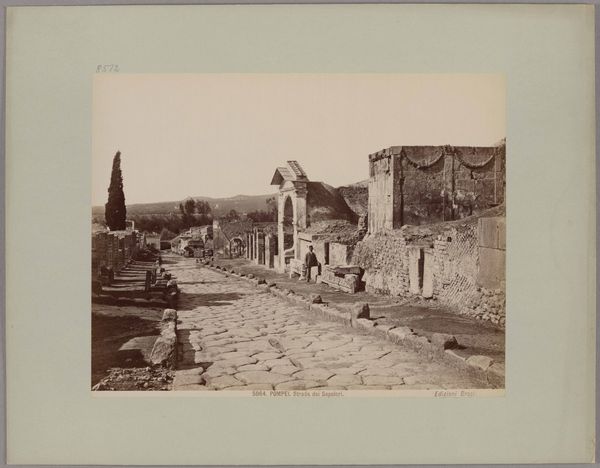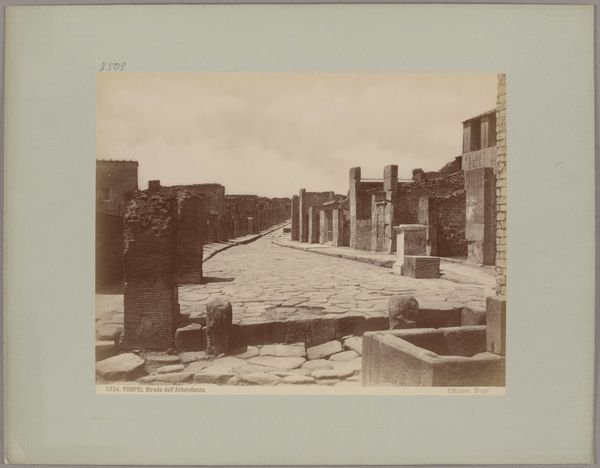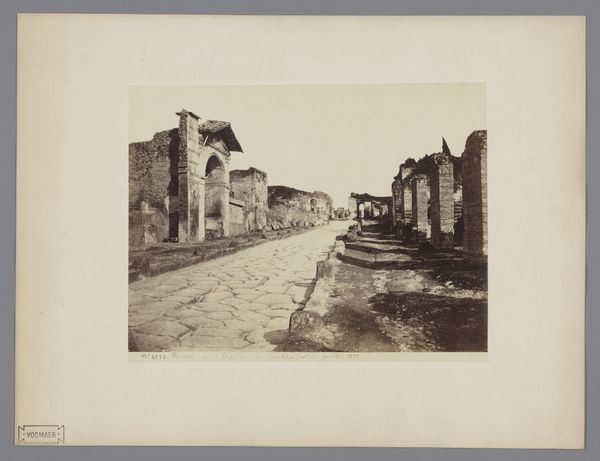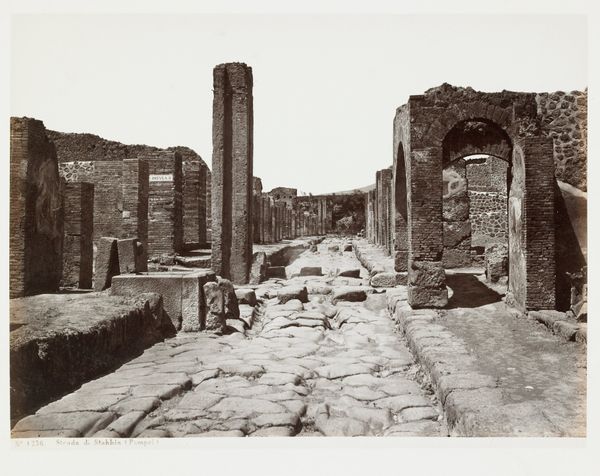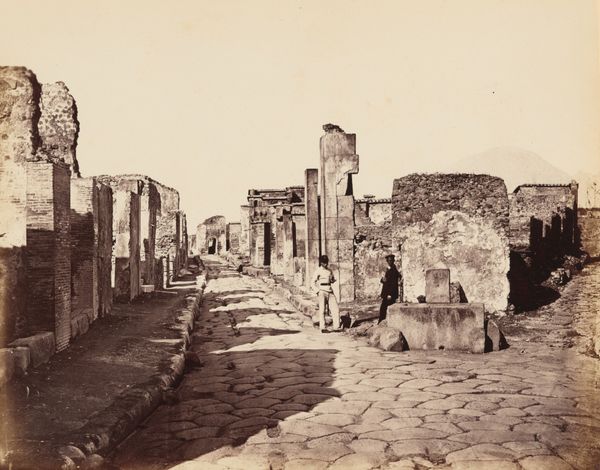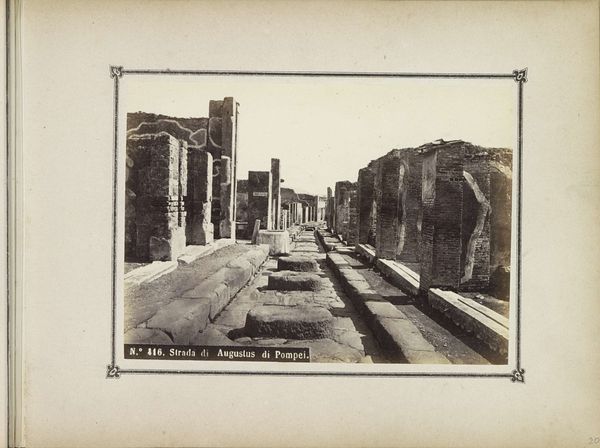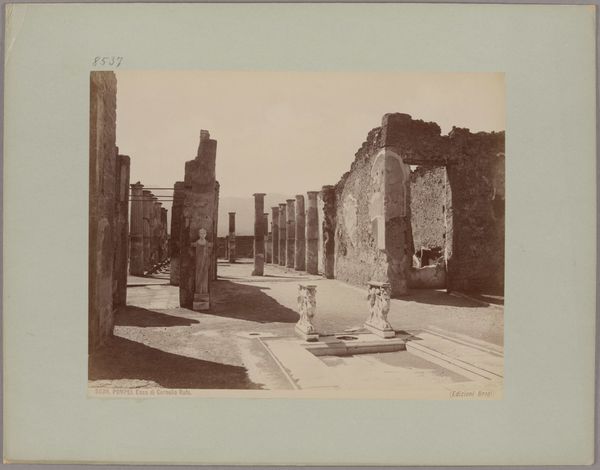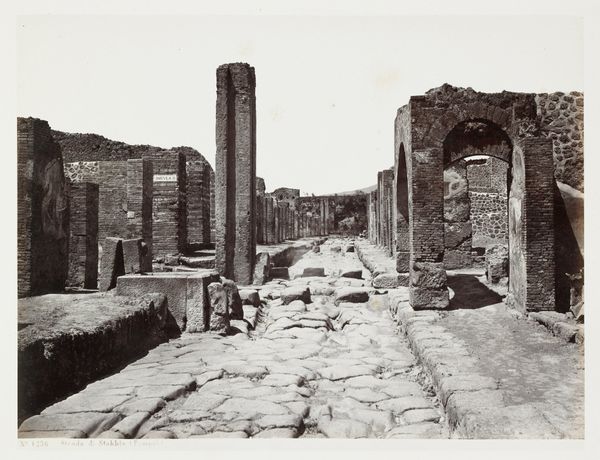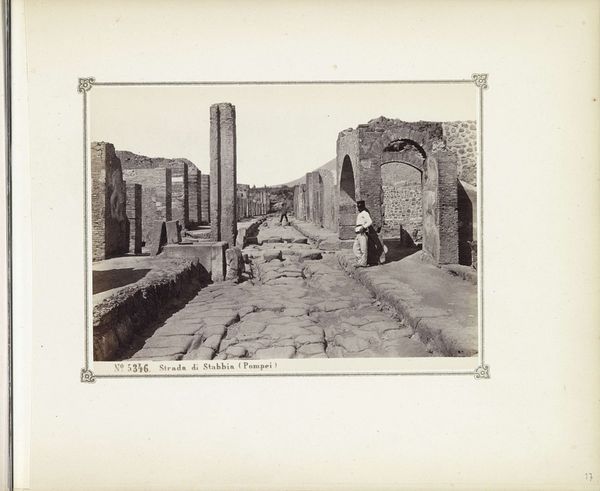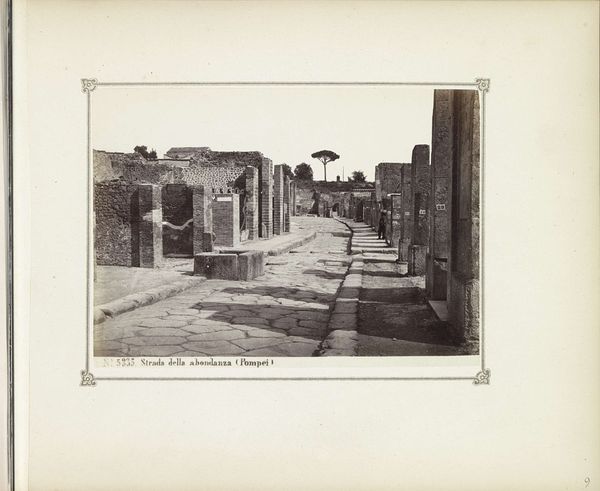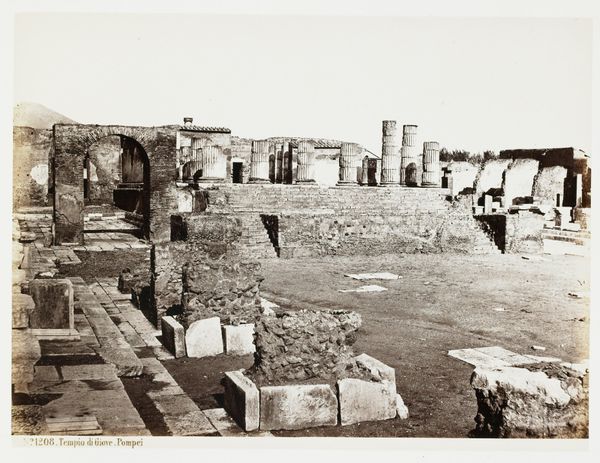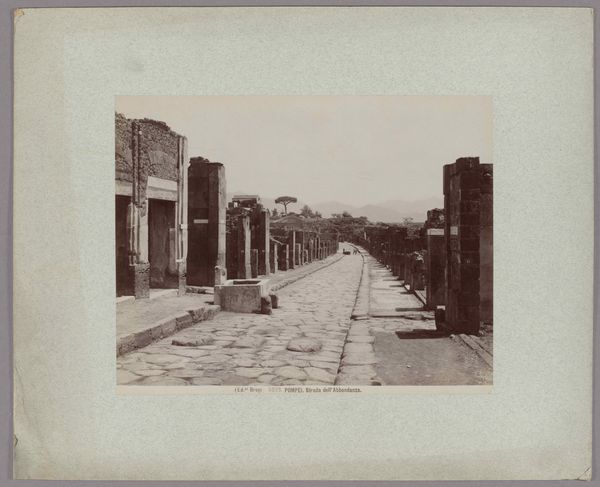
Pompeii, Pompey’s Lane, Tomb Monument of Mamia 1848 - 1858
0:00
0:00
daguerreotype, photography, architecture
#
landscape
#
daguerreotype
#
photography
#
ancient-mediterranean
#
arch
#
architecture
Dimensions: Mount: 13 13/16 in. × 19 3/16 in. (35.1 × 48.8 cm) Image: 8 15/16 × 12 7/16 in. (22.7 × 31.6 cm)
Copyright: Public Domain
Editor: This is "Pompeii, Pompey’s Lane, Tomb Monument of Mamia," a daguerreotype photograph by Firmin-Eugène Le Dien, taken sometime between 1848 and 1858. It's remarkably clear for its age. The scene is so still and empty, a street frozen in time. What do you make of it? Curator: The desolation is indeed palpable. This photograph, created relatively early in photography’s history, reflects a nineteenth-century fascination with antiquity and its recovery through new technologies. Le Dien isn't just recording the ruins. He's participating in a broader project: the visual reconstruction of Roman society and culture for a modern audience. Consider how the Met acquired this piece; it likely reflects the then-contemporary appreciation for archaeological documentation. Editor: So, you’re saying the photo itself plays a role in how people understood Roman life back then? Curator: Precisely. These images provided "evidence," shaping historical narratives. The way this photograph emphasizes the structure and organization of Pompey’s Lane—its architecture—hints at an impulse to understand the society that built it. Think about the monument featured; who was Mamia, and why commemorate her? Editor: I see…It makes me think about what stories we choose to tell, and how pictures like this one help us tell them. Curator: Exactly. The "politics of imagery" shape our perceptions, even today. This photo is both a document and a constructed view, reflecting specific historical, cultural, and artistic interests of its time. Editor: That’s a completely different way of looking at it! It’s not just a record of the past, but an active participant in shaping how we see the past. Thanks for sharing that!
Comments
No comments
Be the first to comment and join the conversation on the ultimate creative platform.
